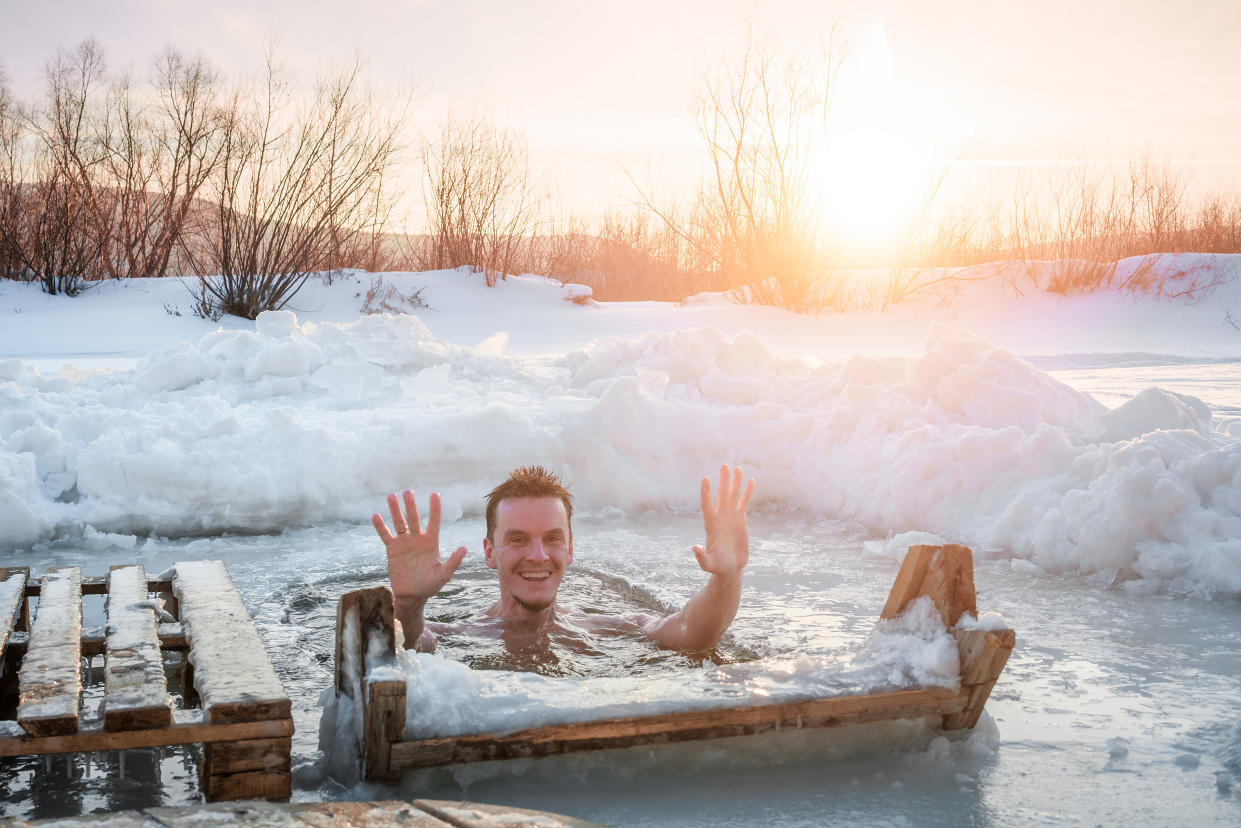Lady Gaga 'relaxes' in an ice bath - but do they have any benefits?

Lady Gaga has shared a video of herself “relaxing” in an ice bath.
In an Instagram clip that has been viewed more than 4.5 million times, the ‘Star is Born’ actress can be seen singing along to rock music while seemingly grimacing in discomfort.
Just days earlier, Gaga shared a picture of herself “enjoying” another ice bath, or cryotherapy, as part of her “post show ritual”.
The Shallow singer told her 37.4 million followers she soaks in sub-zero temperatures for up to 10 minutes, before enjoying a hot bath for 20 minutes, followed by a “compression suit packed with ice packs”.
The Academy Award nominee may be trying to relieve her fibromyalgia, which causes chronic pain all over a sufferer’s body.
The icy bath may also be an attempt to ease her bumps and bruises after dancing with a fan on stage in Vegas ended with the songstress tumbling into the pit last week.
As well as Lady Gaga, Wimbledon champion Andy Murray and Olympic athlete Jessica Ennis-Hill also swear by cryotherapy after a tough day of competition. With its score of celebrity fans, Yahoo UK looks at the pros and cons of ice baths.
Lady Gaga opened up about her fibromyalgia in the 2017 Netflix documentary “Gaga: Five Foot Two”.
The Shallow singer described the condition as a “cyclone of anxiety, depression, PTSD, trauma, and panic disorder”, which “sends the nervous system into overdrive”.
The NHS does not recommend ice baths for fibromyalgia and even advises patients swim in heated pools or indulge in warm baths to ease their discomfort.
Despite this, fibromyalgia support forums are awash with sufferers asking each other for advice on the alternative treatment.
READ MORE: Ice Baths! Compression Suits! Lady Gaga Reveals Her Regenerative Postshow Rituals
After reviewing 17 studies with a total of 366 people, scientists from the University of Ulster in Northern Ireland found ice baths reduced post-exercise soreness by 20% compared to do nothing.
However, cryotherapy was found to be no better at easing discomfort than stretching or compression socks, which may be easier to withstand.
Cryotherapy is best associated with athletes, with Murray’s post-match routine reportedly involving a shower and snack followed by an icy dip.
READ MORE: Lady Gaga takes a nasty tumble off the stage while embracing a fan
Ennis-Hill has also been pictured standing in a wheelie bin of ice to ease her sore muscles after a competitive day on the track.
While it may sound unpleasant, advocates allege ice baths help to boost blood flow and reduce inflammation to injured tissue.
To put this to the test, a study by Edith Cowan University in Western Australia had nine men run for half-an-hour before putting one of their legs in a cold water bath.
After just 15 minutes, tissue in the “icy leg” contained significantly more oxygen than the other limb, suggesting improved muscle recovery.
An animal study also suggests ice baths may reduce inflammation, a key cause of pain and injury among athletes. Scientists from the University of Brasilia exposed injured rats to three 30-minute sessions of cryotherapy.
Within 48 hours, markers of inflammation had reduced, however, there was no sign of muscle recovery.
While it all sounds relatively positive, studies have also shown ice baths may delay muscle repair.
READ MORE: Lady Gaga Confirms She Has Fibromyalgia
Scientists from Kobe University in Japan applied ice packs to the injured limbs of rats for 20 minutes.
Compared to the animals who did not have cryotherapy, this delayed the release of “repair cells” by a day, “impairing muscle regeneration”.
While inflammation may trigger nasty symptoms, it is brought about by the immune system in response to a cut, infection or other damage. This swelling appears alongside the release of immune cells, which are together thought to repair any injuries.
The Japanese scientists worry suppressing inflammation may ultimately delay muscle regeneration.
READ MORE: What is fibromyalgia, the chronic illness Lady Gaga suffers from?
And when it comes to building muscle, athletes may be better off avoiding chilly water.
A team from the Queensland Academy of Sport in Brisbane had 21 men train for 12 weeks, with some having a 10-minute ice bath after each work out.
Compared to those who bypassed the chilly therapy, the “icy men” gained significantly less strength and muscle mass.
Critics also warn spending any longer than just a few minutes in chilly water could be fatal, with pregnant women, children and those with high blood pressure being advised to avoid ice baths altogether.
Overall, it seems the jury is out when it comes to cryotherapy’s benefits.


